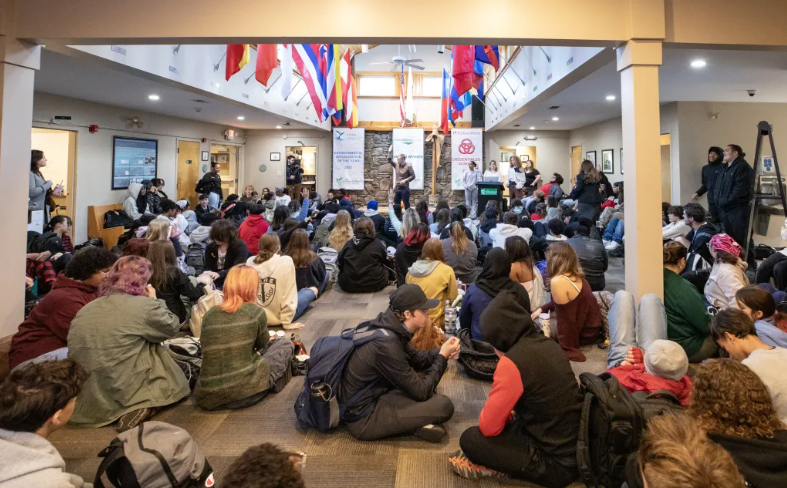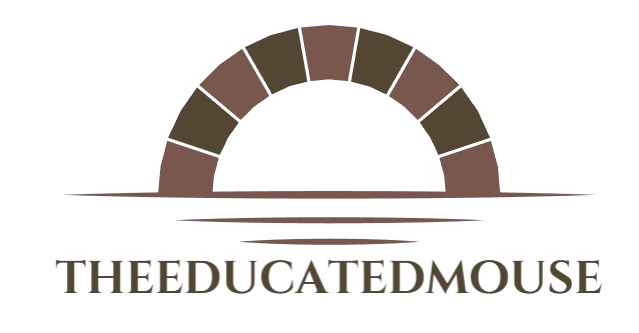On an ordinary autumn morning in West Greenwich, Rhode Island, a group of ninth graders meander along a woodland trail, pausing occasionally not to check phones, but to examine beaver dams, ponder watershed dynamics, and rehearse arguments about energy development. At first glance, it might seem like an outdoor adventure club—but it’s a typical school day at The Greene School, a public charter high school that has made the natural world its most powerful classroom.
Here, education isn’t confined to desks or dictated by bells. Instead, it thrives in a 74-acre wooded campus where academic rigor, social-emotional learning, and environmental literacy intersect. With an approach rooted in inquiry, collaboration, and student agency, The Greene School is showing what’s possible when schools let nature—and students—lead the way.
A Living Laboratory
At The Greene School, science doesn’t just happen in labs—it happens in ponds, among trees, and along hiking trails. In Damaris Borden’s ecology class, freshmen don’t just read about ecosystems; they experience them firsthand. The beaver dam the students observed wasn’t just an interesting sight—it became the basis for discussion about water quality and land use, later feeding into a role-playing debate about renewable energy and conservation policy.
These are not hypothetical exercises. “It’s imaginary,” Borden says of the debate scenario, “but also something playing out across the country.” The school’s philosophy encourages students to grapple with real-world issues from the outset. Whether presenting findings to local officials or simulating policy debates, students are continually asked to think critically and speak confidently on issues that affect their world.

Learning Through Immersion
From the very beginning, students are immersed in both the natural environment and the school’s mission. Within weeks of starting high school, freshmen embark on “Wilderness”—a multi-day camping expedition where they hike, cook, clean, and sleep under the stars with their advisory “crews.” These small, teacher-led groups stay together for all four years, becoming close-knit communities that provide social stability and mentorship.
Initially, the experience can be daunting. Students like Adriel, a junior from urban Providence, admit to being apprehensive. “I hated bugs. I hated spiders. Mosquitoes. All of it,” he recalls. But now, he sees the forest as more than a backdrop—it’s a transformative space that’s boosted his confidence and resilience. “You kind of teach yourself perseverance,” he says. “You have to break barriers just to find the courage to do it.”
The school sees this discomfort as crucial to growth. “We’re intentionally pushing students outside their comfort zones,” explains English teacher and crew leader Sarah Kristiansen. “By that first campfire, they feel so accomplished. You can see the shift happening.”

A School Without Bells
What sets The Greene School apart isn’t only its setting—it’s the way time and space are reimagined. There are no bells. No tightly controlled class transitions. Administrative offices are dispersed and accessible, reflecting a philosophy that values trust and openness. Morning meetings are student-led and school-wide, setting a tone of community and ownership each day.
“There are very few places in life after high school where bells tell you what to do,” says Kerry Tuttlebee, the school’s head. “So why train students that way?” Instead, the school fosters independence by trusting students to manage their own schedules, seek help when needed, and move through their day with autonomy.
This sense of freedom extends to lunchtime, where the cafeteria is rarely crowded. Students sprawl across the campus, eating under trees, walking trails, or playing instruments on the lawn. It’s a deliberate rejection of rigid structure—and a conscious effort to blur the lines between learning, living, and being well.
Academic Excellence Meets Real-World Relevance
While The Greene School may appear unconventional, it meets and often exceeds academic standards. Students take Advanced Placement courses, participate in dual enrollment programs, and regularly outperform their peers statewide in core subjects. But test scores are just one part of a larger goal.
In a recent AP Statistics class, students analyzed tree equity data in Providence, exploring the intersection of environmental and social justice. “It wasn’t just numbers,” said Roman, a senior. “It was about my community.” Using statistical models, the class identified disparities in tree coverage that correlate with poverty and race, gaining not just mathematical insight but civic awareness.
Projects like this are foundational at The Greene School. Sophomores complete a “Tale of Two Cities” research project comparing environmental conditions in their own neighborhoods to those in wealthier areas. The culmination isn’t just a grade—it’s a presentation to state legislators, giving students a platform and a voice in shaping policy.
Preparing for More Than College
Amy Pratt, who founded the school in 2010, envisioned a place that would do more than prepare students for exams—it would prepare them for life. That includes teaching students how to self-regulate, reflect, and advocate for themselves and others. “It’s not just about being here,” Pratt says of the campus. “It’s about having the mindset to do this kind of learning anywhere.”
For students like Olivia, who came to the school after struggling in a large, impersonal middle school, the difference has been life-changing. Now a senior planning to study plant conservation, she says the freedom and connection she found at The Greene School gave her a new sense of purpose. “I feel free here,” she says. “Which I hadn’t ever felt before in school.”
A Model Worth Following
In a time when many schools are searching for ways to engage students more deeply, support mental health, and prepare young people for an uncertain future, The Greene School offers a powerful example. Its success lies not just in its natural setting, but in how it uses that setting to foster curiosity, community, and capability.
Here, students don’t just learn about the world—they learn how to shape it. Whether around a campfire or at a legislative podium, they discover what it means to belong, to lead, and to make a difference. In a world increasingly defined by disconnection, The Greene School offers a simple but radical idea: that nature, trust, and meaningful work can guide students not just to academic success, but to personal transformation.





